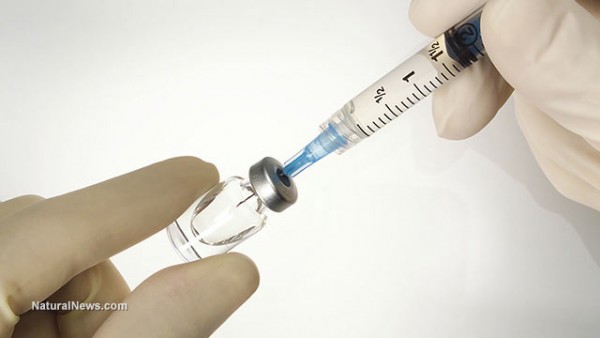CONFIRMED: High levels of vitamin D lower plasma cholesterol levels in children
11/29/2018 / By Tracey Watson

In a perfect world, there would be no need to talk about little kids with high cholesterol levels. Unfortunately, the world isn’t perfect, and more and more children – at an increasingly younger age – are now being diagnosed with a condition that has always, traditionally, been associated with the elderly.
Unhealthy, processed foods which lead to obesity, along with shockingly low exercise levels, are making high cholesterol an increasingly prevalent problem among children. And this is dangerous, because high cholesterol can result in a build-up of plaque on artery walls, interfering with blood supply to several organs, including the heart. This can cause serious heart and other problems down the line, and is also often a contributing factor when someone has a stroke.
Of course, for a child diagnosed with high cholesterol it is imperative to start exercising, lose weight and to eat the right foods. In addition, a study by researchers from the University of Eastern Finland, published in The Journal of Clinical Endocrinology & Metabolism, recently found that there is a promising link between higher serum levels of vitamin D and lower plasma cholesterol levels in young children.
The sunshine vitamin’s role in lowering cholesterol
Vitamin D – which is actually a hormone – is known for its role in strengthening bones and fighting infection, and is vitally important for the optimal functioning of the heart, lungs, brain and muscles. Our bodies produce the majority of the vitamin D we need from sunlight, and we also get small amounts from the foods we eat. Some people who live in areas with less sunshine may choose to increase their intake through dietary supplements. (Related: The 10 symptoms of vitamin D deficiency you need to recognize.)
Mother Nature's micronutrient secret: Organic Broccoli Sprout Capsules now available, delivering 280mg of high-density nutrition, including the extraordinary "sulforaphane" and "glucosinolate" nutrients found only in cruciferous healing foods. Every lot laboratory tested. See availability here.
The Finnish research team set out to determine the link – if any – between increased vitamin D levels through supplementation or exposure to sunlight, and a decrease in cholesterol levels in children. The research included 419 children between the ages of 6 and 8, and formed part of the Physical Activity and Nutrition in Children (PANIC) Study, a lifestyle intervention study conducted by the University of Eastern Finland’s Institute of Biomedicine.
The study found that even after making the necessary adjustments for differences in diet, sunlight exposure, parental education, body weight (adiposity), etc., vitamin D was definitively linked to lower total cholesterol, LDL (bad) cholesterol and triglyceride levels in the study participants. Children with the highest vitamin D levels exhibited the lowest total cholesterol and LDL cholesterol levels. (Related: Sunshine helps your body fight disease.)
The best ways to increase vitamin D levels
So, for children or adults fighting high cholesterol levels, getting out in the sunshine to increase their vitamin D levels is vitally important. The Vitamin D Council stresses that it is impossible to get the necessary vitamin D from foods only. They advise:
The most natural way to get vitamin D is by exposing your bare skin to sunlight (ultraviolet B rays). This can happen very quickly, particularly in the summer. You don’t need to tan or burn your skin to get vitamin D. You only need to expose your skin for around half the time it takes for your skin to begin to burn. How much vitamin D is produced from sunlight depends on the time of day, where you live in the world and the color of your skin. The more skin you expose the more vitamin D is produced.
For those who live in places where it is impossible to get enough sunshine exposure, supplements may be necessary. The Council advises that vitamin D3 is the best option, and recommends 1,000 IU per day for infants, 1,000 IU a day per 25lbs of body weight for children, and 5,000 IU daily for adults.
Learn more about Vitamin D and other vitamins at Nutrients.news.
Sources include:
Tagged Under: child health, children, cholesterol, fitness, heart health, high cholesterol, natural remedies, nutrients, prevention, research, sunshine, supplements, vitamin D




















